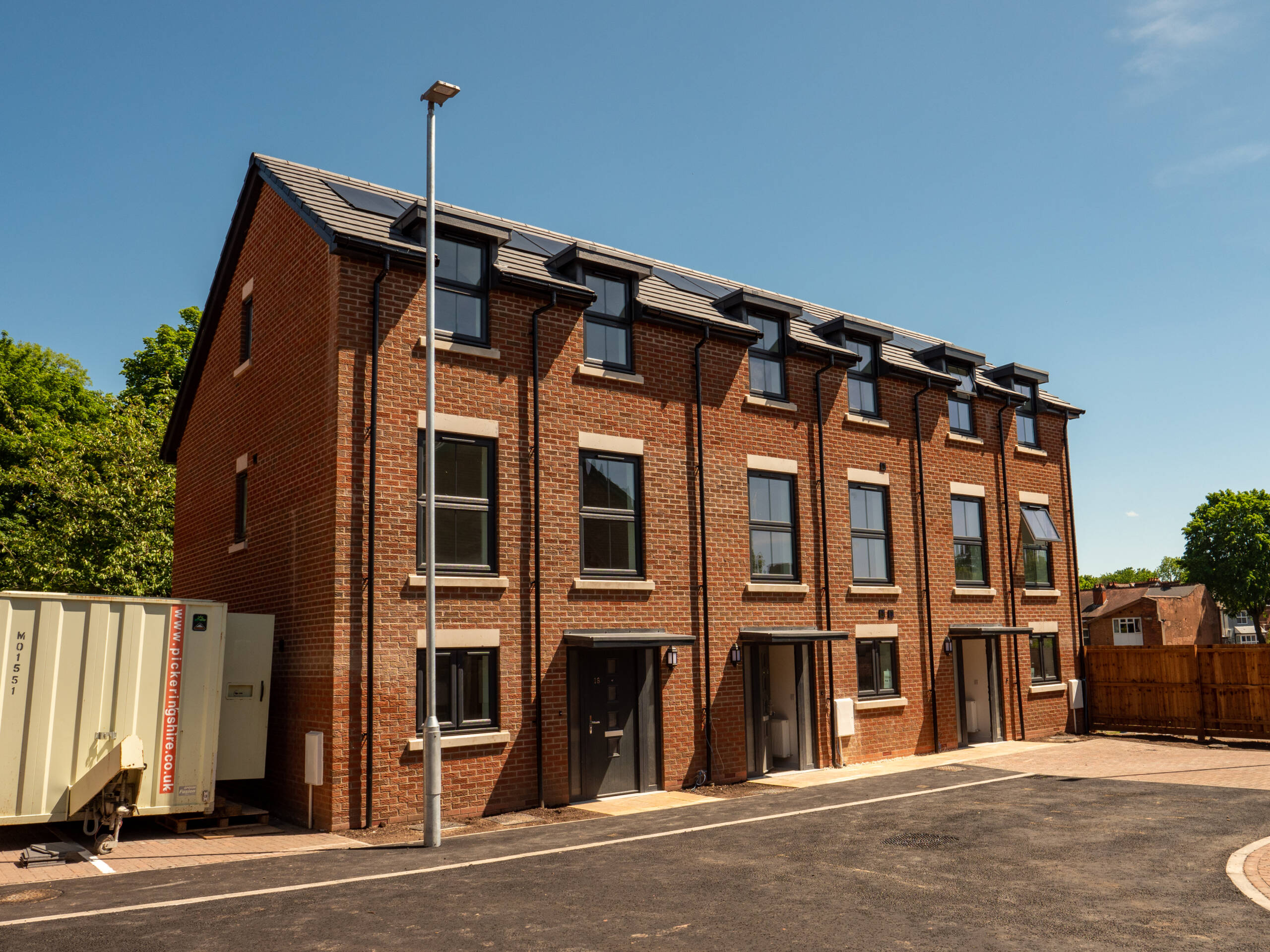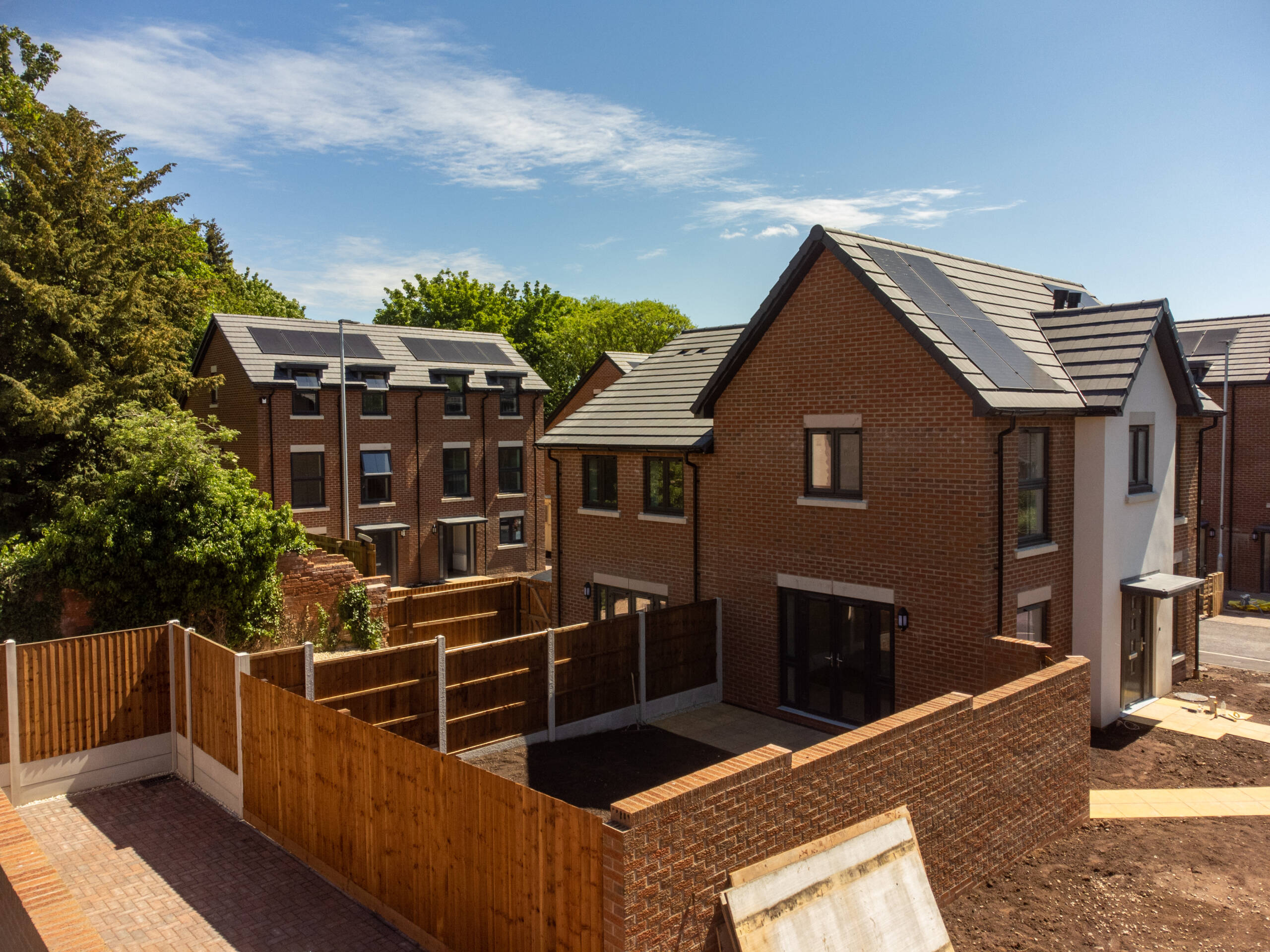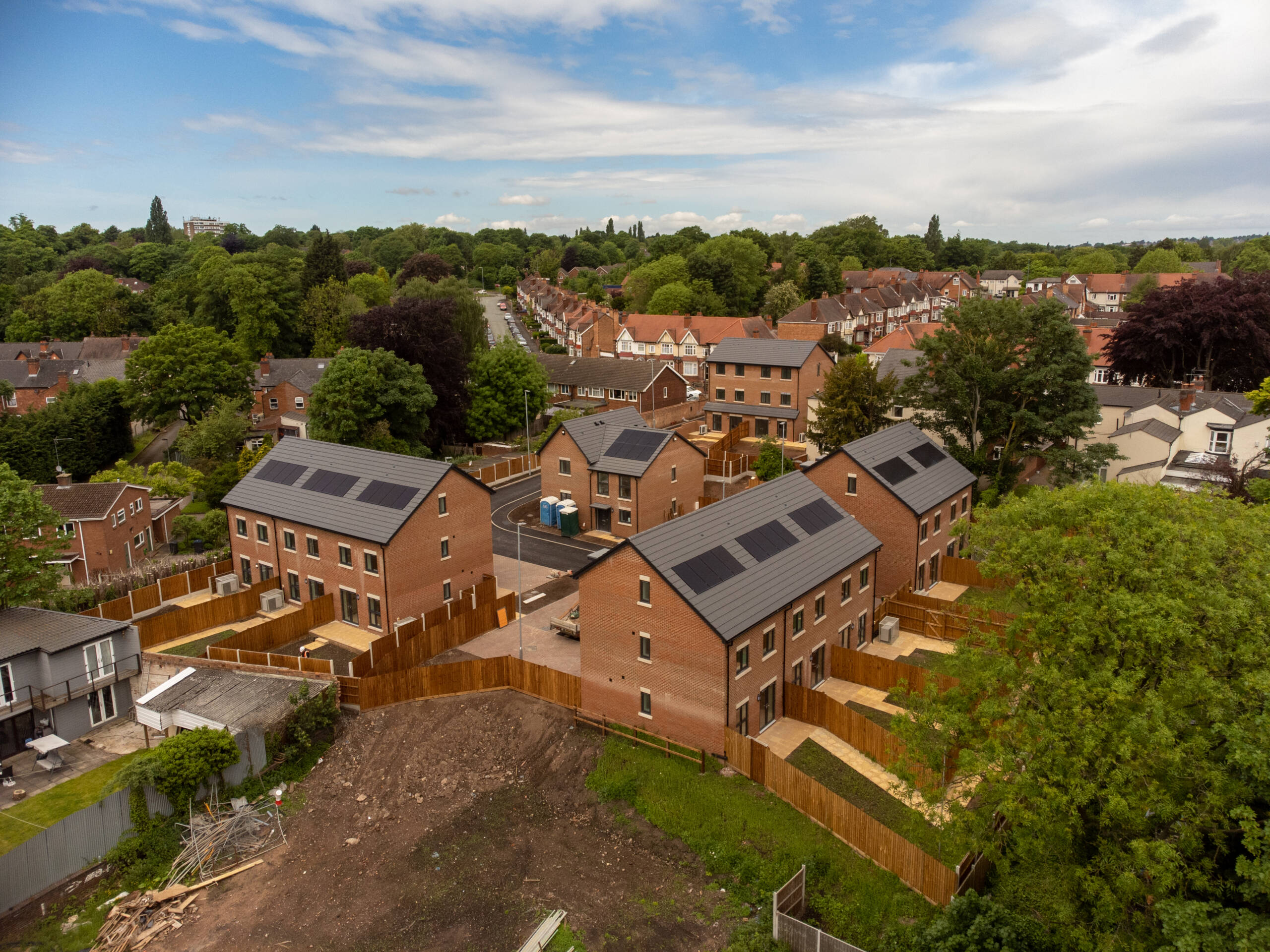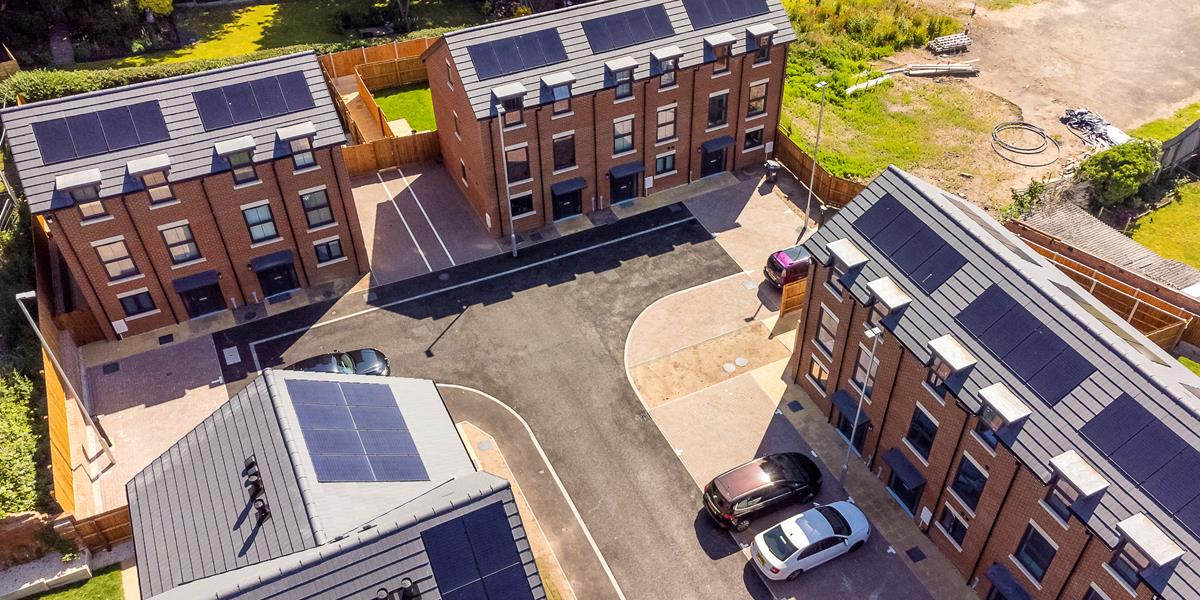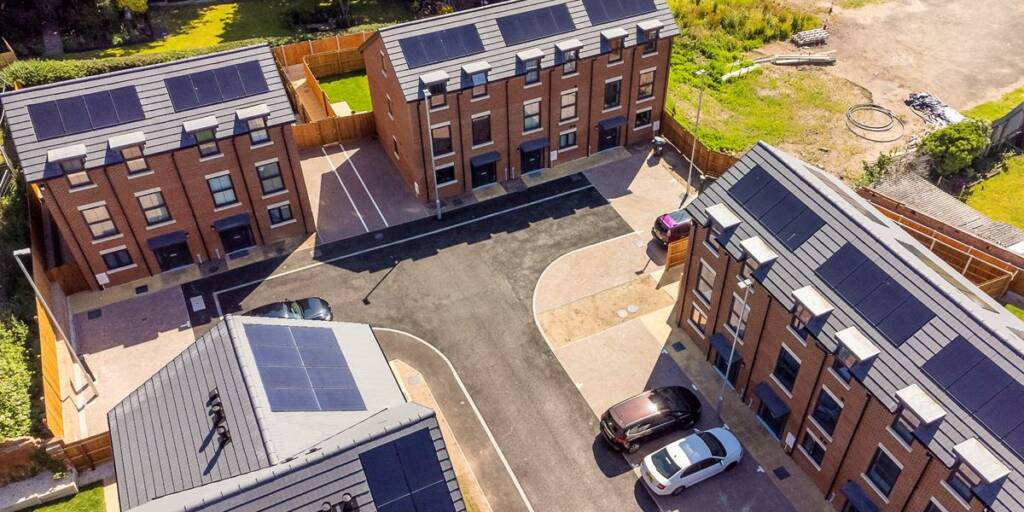
Midland Heart achieves Future Homes Standard (FHS)
Midland Heart’s approach to achieving Future Homes Standard (FHS) 3 years in advance of the legislation
Project 80, the first phase of 12 homes built by Tricas in Birmingham for social homes provider Midland Heart, is complete and the residents have moved in. Built to the Future Homes Standard (FHS) 3 years in advance of the 2025 legislation’s introduction and using brick and block construction or masonry construction the site consists of eight three-bedroom houses of two-and-a-half storeys, two four-bedroom three-storey houses and a pair of two-bedroom two-storey houses.
This development of high-quality social homes is not connected to the gas grid, is highly insulated with good ventilation and designed to provide between 75% to 80% reduction in carbon.
Once residents have moved in, the homes will also be the subject of an extensive programme of evaluation by a team at Birmingham City University.
Building type: Residential Social Housing
Location: Birmingham
Client: Midland Heart
Contractor: Tricas Construction
Architect: Oakley Architects
Completion: April 2022
Ground Floor: 150mm XT/HYF Hyfloor T&G PIR insulation achieved a U-Value of 0.11 W/m2K
Walls: Full-fill Cavitytherm rigid PIR insulation achieved a U-Value of 0.13 W/m2K
Roof: 150mm XT/PR between rafters and 90mm below achieved a U-Value of 0.10 W/m2K 150mm
The Vision
Set to become legislation in 2025, the introduction of the Future Homes Standard (FHS) is one of the most significant changes the housing sector has faced in quite some time. It demands stringent building fabric requirements, a low-carbon form of heating and hot water, and buildings that emit 75%-80% less carbon than under current regulation, Part L 2013.
Project 80 from Midland Heart, with its construction of 12 masonry homes has met these standards three years before the legislation comes into effect.
In collaboration with Tricas Construction, Birmingham City University and select industry suppliers like Unilin Insulation, Midland Heart Housing Association’s development is the first project of their plan to build 80 homes that meet or exceed the 2025 FHS.
We were selected as the insulation supplier to this first phase of the development. The project’s overall aim is to design standard housing using locally sourced labour and to then compare the performance of different methods, materials and technologies to establish the optimum configuration and cost basis. All the time learning from the experience of traditional building to the new regulations using new technologies and processes.
Fabric First Approach
One of the challenges in meeting FHS standards came with the choice of external fabric and the use of a near full-fill PIR insulation to meet the 0.13 U-value. The houses are traditional construction, brick and block leaves, with 150mm CavityTherm full-fill wall insulation.
Initially modelled to SAP 2012 to establish a baseline, the plots were then modelled to SAP 2010 with the goal of reach an 80% C02 emissions reduction which allowed Midland Heart to determine the performance criteria.
Most of the overall specification is consistent in using CavityTherm as the full fill cavity wall insulation system solution. On some plots, the project incorporated differing airtightness levels and ventilation strategies along with various heating and hot water approaches.
Maintaining consistent cavities was a challenge as so Unilin Insulation (formerly Xtratherm) provided onsite training with a series of toolbox talks to ensure the wall cavities were consistent in width and built to best practice standards. This solution’s performance characteristics are such that, no matter what heating solutions are installed, the buildings can function as efficiently as possible.
“The Future Homes Standard presents an interesting challenge for industry (and end users) in that it `has a significant effect on the way we design, construct, use, and maintain new-homes. At Midland Heart we are keen to understand the implications of the FHS on both us and our residents, and by building sites that model (in conjunction with researching) the FHS today we can generate a detailed understanding of this, which will guide our approach to the FHS in 2025. For me, the building fabric is critical to the performance of the properties and reducing operational carbon emissions. By improving the fabric in the way we have done, we have significantly reduced the heating demands of the properties, which in-turn will reduce the energy bills for our residents at a crucial time. In addition to improving the fabric, we have incorporated low and zero carbon technologies , such as PV and heat pumps, which will go further to reducing the energy demand, carbon emissions, and cost of running these properties.”
Chris Miller, Director of Development, Midland Heart
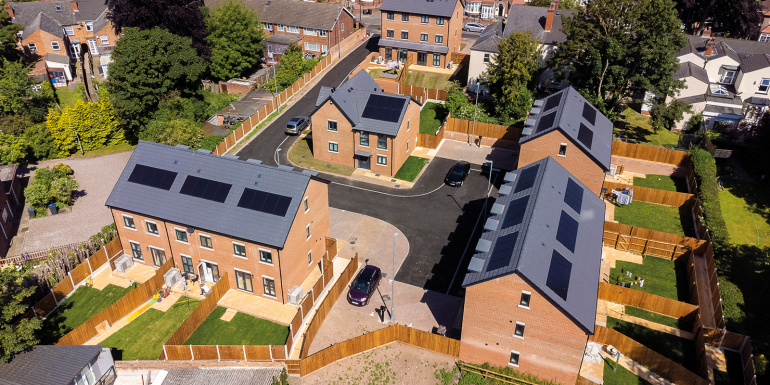
To find out more about this project or Unilin Insulation solutions and service levels, why not Contact Us today.
Join our mailing list.
Stay informed of the latest developments with the Unilin Insulation mailing list
"*" indicates required fields
Resources
Have a look at our brochures, technical files and other documents
